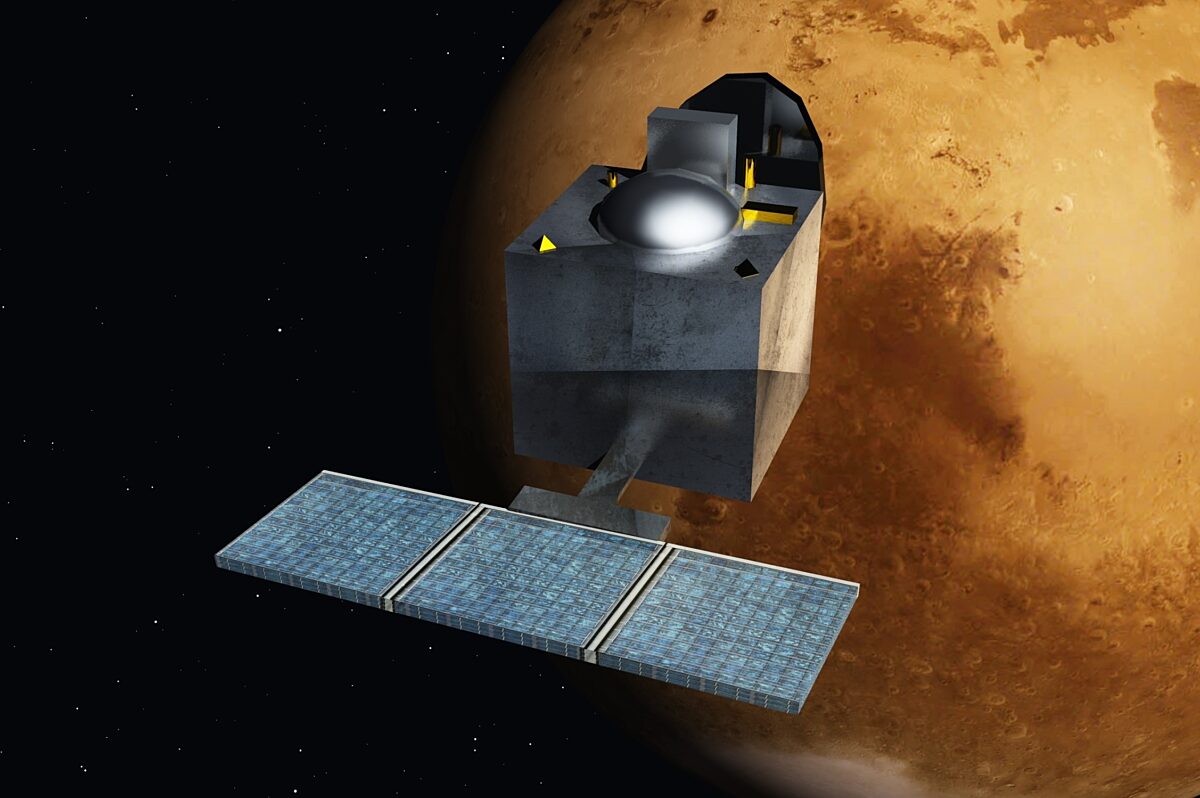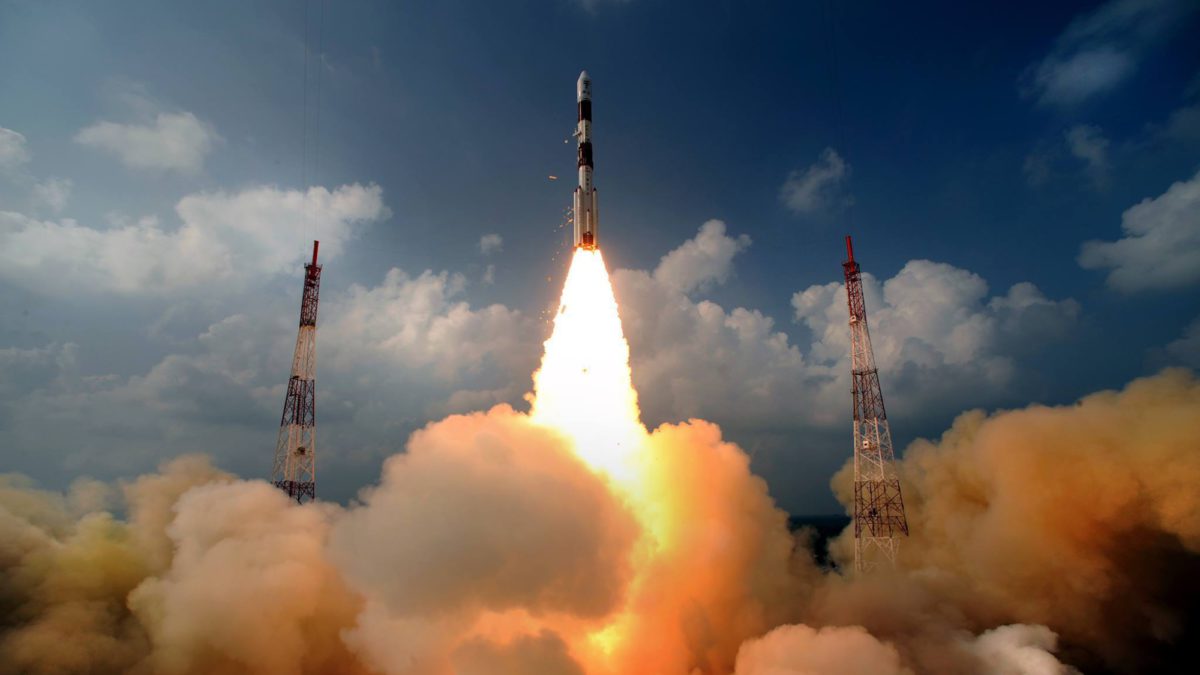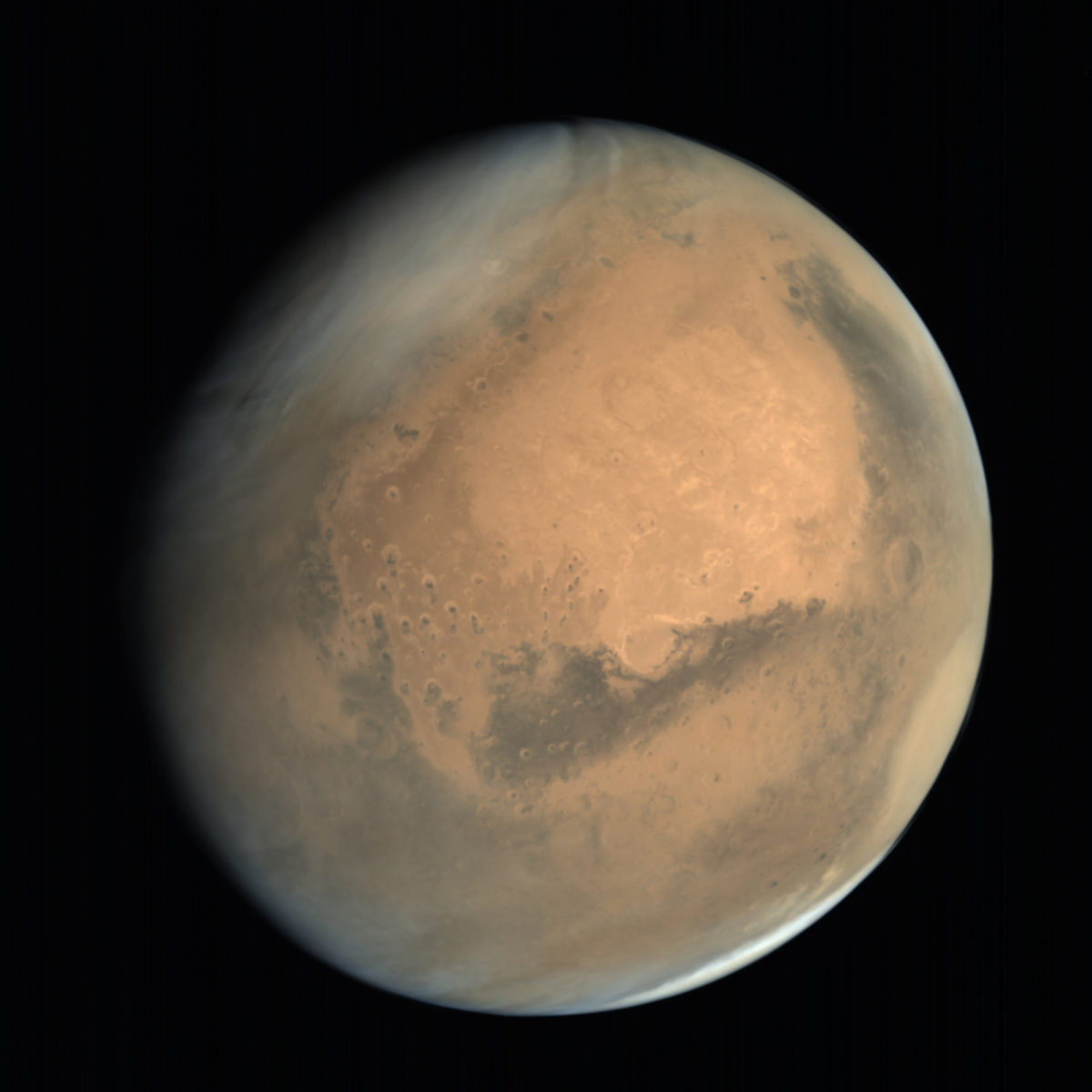Mangalyaan, India’s first Mars mission
The Mars orbiter that boosted India’s planetary program
Highlights
- Mangalyaan was India’s Mars orbiter that observed the planet from 2014 to 2022.
- The mission was India’s first to another planet, and a major step forward for India's space program.
Why did India launch Mangalyaan?
On November 5, 2013, the Indian Space Research Organization (ISRO) launched its first spacecraft bound for Mars. India built Mangalyaan (“Mars craft” in English) to study the Red Planet and test key technologies required for exploring the inner Solar System. The Mangalyaan spacecraft successfully entered Mars orbit on September 23, 2014, making ISRO only the fourth space agency in the world to do so. Prior to India, only the United States, the Soviet Union and the European Space Agency (ESA) had successfully explored Mars.
Mangalyaan operated for seven and a half years, observing Martian landscapes and studying their composition using its five science instruments.

Why did ISRO launch Mangalyaan on a PSLV rocket?
ISRO originally intended to launch Mangalyaan on their Geosynchronous Satellite Launch Vehicle (GSLV) rocket instead of the only roughly half-as-powerful Polar Satellite Launch Vehicle (PSLV). As with most Mars missions, a GSLV rocket could’ve boosted Mangalyaan out of Earth orbit and onto an interplanetary trajectory to the Red Planet. But the rocket suffered two failures in 2010, just as Mangalyaan was being conceptualized.
Fixing the identified issues in the rocket’s design and preparing for another launch could have taken at least three years, placing it close to the time-sensitive November 2013 launch window for Mars. The next launch opportunity was in 2016, so ISRO decided to launch Mangalyaan on a PSLV rocket in 2013 instead.
However, the PSLV could only place Mangalyaan in a highly elliptical Earth orbit. It would be the spacecraft’s job to fire its engines at precise points in each orbit multiple times over the next few weeks to set itself on a trajectory to Mars, or it would miss the planet entirely. The trajectory design was highly unusual for a Mars mission but it worked. Once the spacecraft arrived at the Red Planet roughly 300 days later, it fired its engines again and successfully entered Mars orbit.

Why did Mangalyaan enter a highly elliptical orbit around Mars?
Mangalyaan entered Mars orbit with its closest point to the planet at about 420 kilometers (about 261 miles) and farthest at about 80,000 kilometers (about 49,710 miles), which is a much longer orbit than contemporary Mars missions. Over the years, ISRO reduced the orbit’s size but it never appreciably changed relative to other missions. For example, NASA’s Mars Reconnaissance Orbiter mapping mission has a nearly circular orbit of about 300 kilometers (about 186 miles) while ESA’s Mars Express has an orbit of 300 by 10,000 kilometers (about 186 by 6214 miles).
Mangalyaan’s large and highly elliptical Mars orbit was tied to its choice of launching on a PSLV rocket. For the PSLV to place Mangalyaan in the desired Earth orbit, the spacecraft couldn’t be any heavier than it was — it couldn’t carry any more fuel. And because Mangalyaan had to get out of Earth orbit by itself, it needed to use its own fuel, which complicated its Mars orbit. This impacted the spacecraft's scientific observations and mapping capabilities and is partly why Mangalyaan’s scientific output was low. However, Mangalyaan's orbit did give it a great vantage point to capture full globe views of Mars.
What technologies did ISRO develop for Mangalyaan?
ISRO built upon its experience with Chandrayaan 1, India’s first lunar orbiter, to develop Mangalyaan. The Mars spacecraft was a modified design of the Chandrayaan 1 spacecraft with upgraded components as required. For example, there were more and upgraded solar panels to make up for reduced solar energy available at Mars.
ISRO also developed the ability for its ground stations to communicate with a spacecraft on another planet. With Mangalyaan, there were two-way communication lags of up to 42 minutes; this gap also demanded enabling the spacecraft to make autonomous decisions for situations where there would be no time for humans to be in the loop, something that wasn’t necessary for Chandrayaan 1.
National response
The fact that ISRO successfully placed a spacecraft in Mars orbit on their very first attempt garnered attention and praise from people worldwide. In India, the mission had even deeper effects, aided by ISRO’s inaugural efforts to be active on social media to make people at large aware of the mission.
The mission saw several film and TV show adaptations in India, the most popular of which was the dramatized movie Mission Mangal. The national government decided to feature an illustration of Mangalyaan on the reverse side of India’s highest denomination currency note of ₹2,000 (roughly $27). Writer Minnie Vaid wrote a book called "Those Magnificent Women and their Flying Machines," which profiles the journeys of some of the key women who had leading roles in the mission.
Future missions
With the experience gained from Mangalyaan and technologies built for it, ISRO is planning more missions to explore the inner Solar system, such as the Venus Orbiter Mission and Mangalyaan 2, which could launch as early as 2026 with an upgraded bus and 100 kilograms (about 220 pounds) of scientific instruments. ISRO also recently launched the Aditya-L1 solar observatory.

Mission end
In April 2022, ISRO lost contact with Mangalyaan after it passed into Mars' shadow for an extended period. Officials said the spacecraft likely ran out of propellant and could not orient its solar panels properly to receive power. The mission far outlived its projected six-month lifespan.
Acknowledgments: this page was initially written by Jatan Mehta in 2021. End-of-mission edits were made by Planetary Society staff.


 Explore Worlds
Explore Worlds Find Life
Find Life Defend Earth
Defend Earth

